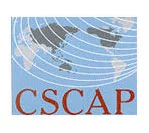FIRST, how not to step forward: in June 2008 then prime minister Kevin Rudd argued that the Asia-Pacific was moving into a new, more dangerous era. He saw the need to strengthen regional institutions, especially through cementing US participation. In a speech that grabbed wide international attention he proposed the creation of an Asia-Pacific Community.
The excitement of this initiative diminished during the following months as it became clear that no country in Asia would offer serious support. Arguably, Rudd’s campaign weakened rather than enhanced Australia’s influence in the region. He failed to recognise that institutional progress in Asia, when it takes place at all, tends to be achieved through gradualist diplomacy and often informal channels.
One recent example comes from the Council for Security Co-operation in the Asia Pacific. At a glance, the advance may seem modest and subtle; it focuses on the way current regional institutions may relate to one another — but it is based on a genuine regional consensus, and is significant.
CSCAP is a network of security specialists in which Australia works with China and even North Korea as well as the US, Japan and 16 other Asia-Pacific countries. Developed across more than two decades — and with Association of Southeast Asian Nations countries playing a central role — CSCAP is a non-government process, but its members tend to have close contact with their national governments, and seek to make the organisation’s work relevant to government priorities.
CSCAP members tend to agree that the Asia-Pacific is becoming more dangerous, especially with growing strategic competition between the major powers, and sympathise with those in government who consider the extant multilateral institutions — the ASEAN Regional Forum, the East Asia Summit and so forth — not yet strong enough to play a full role in preserving regional stability.
CSCAP, however, understands that any progress depends on the patient building of consensus. A high-profile proposal from one country can sharpen rather than moderate national rivalries. Governments are not always the best agents of change. Exploring new regional initiatives in so-called track two bodies such as CSCAP is less hazardous. It is offering the opportunity to test ideas for regional co-operation without locking national governments into rigid, and often contentious, policy settings.
In this spirit, CSCAP met in Kuala Lumpur, Jakarta and Tokyo during the past year and forged agreement on key issues on the management of security in our region. The proposals are constructive and, equally important, grounded in a widespread regional consensus.
They acknowledge first that ASEAN must remain central in the multilateral architecture. This in itself can provoke criticism. Some argue that this 10-member Southeast Asian organisation is neither weighty nor robust enough to support such a role. Others, however, point out that it is the most successful regional endeavour so far in Asia, and that any other claim to leadership (for instance, from China or Japan) would be hotly contested. The CSCAP meetings backed ASEAN, but at the same time suggested ways to bolster the capacity of the several ASEAN-related institutions to promote stability.
These institutions include the unwieldy 27-country security dialogue, the ASEAN Regional Forum; the more recent ASEAN Defence Ministers Meeting-Plus; and the East Asia Summit (a heads-of-government meeting, begun in 2005 and including all the ADMM-Plus countries). As a leaders’ meeting, the EAS has clear potential to articulate a more comprehensive and compelling vision for the continued security and prosperity of the Asia-Pacific.
The CSCAP deliberations focused on the summit, urging that it offer such strategic direction while the ARF continues as a forum for structured security dialogue, and practical security co-operation is developed in the ADMM-Plus and the Expanded ASEAN Maritime Forum.
To enhance the EAS’s influence and authority CSCAP argues its annual meeting needs to be extended and the other institutions must be “promptly and formally advised of its outcomes”.
The ASEAN Secretariat in Jakarta should certainly be expanded and consideration also given to creating a specific EAS secretariat to help build continuity between summits, and to develop the qualities of responsibility and accountability essential to be effective.
To promote a clear and wider sense of ownership of this process for achieving a more stable and orderly region, the CSCAP group even proposed the idea of joint chairmanship of the EAS with non-ASEAN countries.
It is important to recall how jealous ASEAN has been of its leadership role in regional institutions. CSCAP itself has tested a joint chairmanship arrangement in which Japan, India, Australia and other non-ASEAN countries serve as regional co-chairs alongside an ASEAN country co-chair. This has been so successful that ASEAN members see the arrangement as a model for the EAS.
It is also important to remember that in the past China and other East Asian countries have been hesitant about giving a greater role to the summit. They are cautious about an
organisation in which countries from outside the immediate East Asia region may have a strong voice.
It is an achievement, therefore, that the CSCAP recommendations were supported from every side; everyone present put the objective of a peaceful and prosperous region ahead of individual national anxieties.
There is no big bang in CSCAP’s recommendations for regional architecture. What we do have is some careful thinking, aimed at consolidating existing institutions in particular, by enhancing the authority of the East Asia Summit.
The task now is to convince track one — the various national governments and inter-government regional organisations — that CSCAP’s proposals, and the consensus that gives them force, may offer a basis for real institutional reform.
http://www.theaustralian.com.au/opinion/on-a-track-to-regional-peace-with-cscap/storye6frg6zo-1226974263135
Article by Dr Ron Huisken and Prof Anthony Milner which appeared in
The Australian, 2 July 2014.





